Envirofacts Greenhouse Gas Reporting Subparts Data Tables and Visual Overview
📘 Introduction
This page provides a streamlined overview of greenhouse gas (GHG) data reported to EPA under the Greenhouse Gas Reporting Program (GHGRP), organized alphabetically by subpart. Each section summarizes the reported data and its structure within Envirofacts tools and services.
For full regulatory context and technical reporting guidance, see the GHGRP web area.
🔍 How to Use This Page
Each subpart section provides:
- A short description of the source category.
- An interactive table diagram - click any box to explore the corresponding GHG reporting table.
- Links to Envirofacts metadata pages for more detail on each table.
For programmatic access to the data, use the Envirofacts Data Service API. For visual filtering and downloading, try the GHG Query Builder.
📚 Subparts Covered
Jump directly to a subpart using the links below:
- Subpart AA – Pulp and Paper Manufacturing.
- Subpart C - Stationary Fuel Combustion Sources
- Subpart D - Electricity Generation.
- Subpart DD - Municipal Solid Waste
- Subpart EE - Metals Production.
- Subpart F – Aluminum Production.
- Subpart FF – Underground Coal Mines.
- Subpart G – Ammonia Manufacturing.
- Subpart GG – Zinc Production.
- Subpart H – Cement Production.
- Subpart HH – Municipal Solid Waste Landfills.
- Subpart I – Electronics Manufacturing.
- Subpart II – Industrial Wastewater Treatment.
- Subpart K – Ferroalloy Production.
- Subpart L – Fluorinated Gas Production.
- Subpart MM – Suppliers of Petroleum Products
- Subpart N – Glass Production.
- Subpart NN – Suppliers of Natural Gas and Natural Gas Liquids.
- Subpart P – Hydrogen Production.
- Subpart PP – Suppliers of Carbon Dioxide (CO₂).
- Subpart Q – Iron and Steel Production.
- Subpart R – Lead Production.
- Subpart RR – Geologic Sequestration of Carbon Dioxide.
- Subpart S – Lime Manufacturing.
- Subpart SS – Electrical Equipment Use.
- Subpart T – Magnesium Production.
- Subpart TT – Industrial Waste Landfills
- Subpart U – GHG Emissions from Electric Arc Furnace Steelmaking.
- Subpart UU – Injection of Carbon Dioxide.
- Subpart V – Nitric Acid Production.
- Subpart W – Petroleum and Natural Gas Systems.
- Subpart X – Petrochemical Production.
- Subpart Y – Petroleum Refineries.
- Subpart Z – Phosphoric Acid Production.
📄 Subpart AA – Pulp and Paper Manufacturing
GHG data reported by pulp and paper manufacturing facilities.
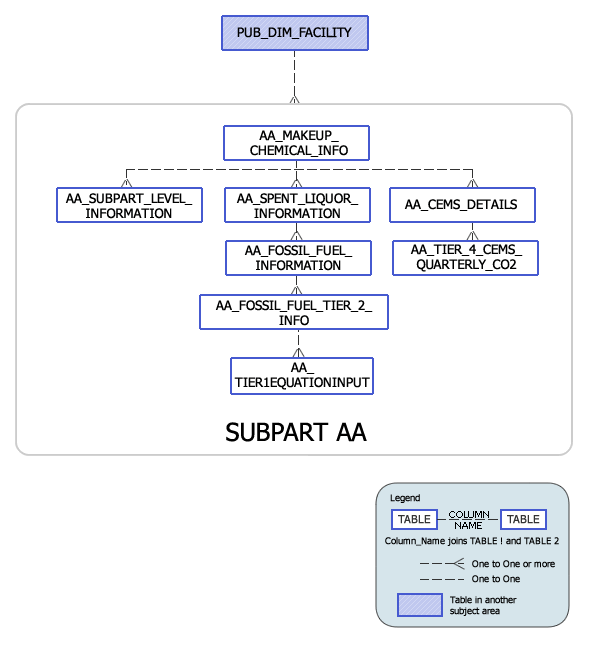
Diagram: Click any box to view the corresponding GHG data table for Subpart AA.
📄 Subpart C - Stationary Fuel Combustion Sources
Covers GHG emissions from fuel combustion at facilities such as power plants, boilers, and industrial energy systems.

Diagram: Click any box to explore the corresponding GHG reporting data table for Subpart C.
📄 Subpart D – Electricity Generation
Covers GHG emissions from fossil fuel combustion at facilities that generate electricity for distribution.
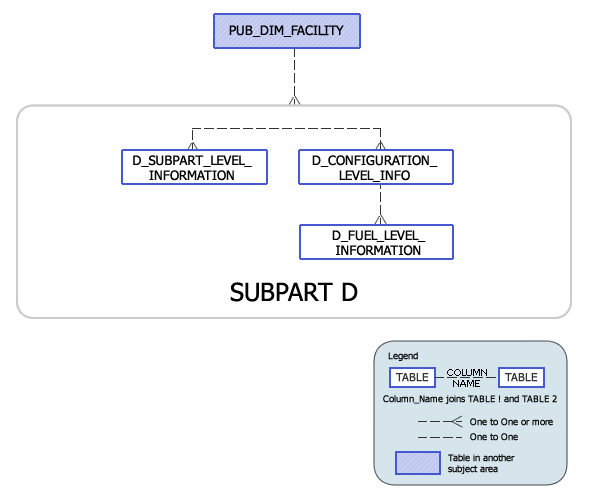
Diagram: Click any box to explore the corresponding GHG reporting data table for Subpart D.
📄 Subpart DD – Electrical Transmission and Distribution
Covers GHG emissions from equipment used in electrical transmission and distribution systems, including SF6 and PFCs.
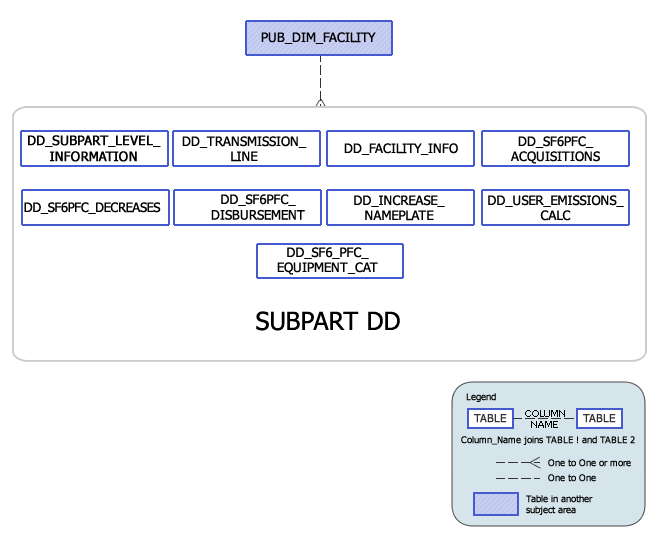
📄Subpart EE – Electrical Equipment Manufacturing
Covers GHG emissions from manufacturing electrical equipment, including emissions calculated using CEMS and non-CEMS methods.
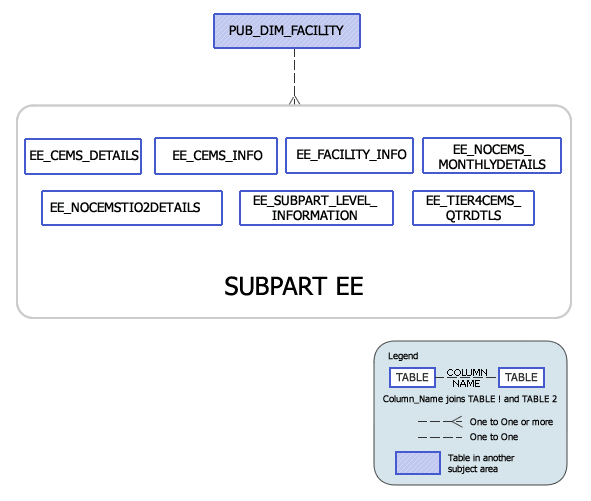
Subpart EE table structure with clickable elements.
📄Subpart F – Aluminum Production
Covers GHG emissions from primary aluminum production processes, including electrolytic reduction and ancillary operations.
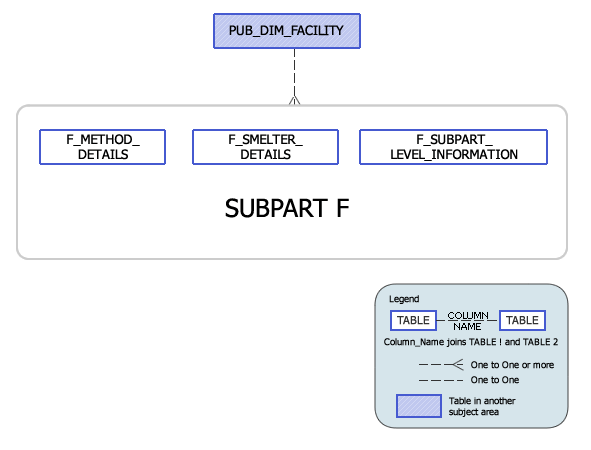
Subpart F table structure with clickable elements.
📄Subpart FF – Underground Coal Mines
Covers GHG emissions from underground coal mining operations, including ventilation, degasification systems, and methane destruction or recovery activities.
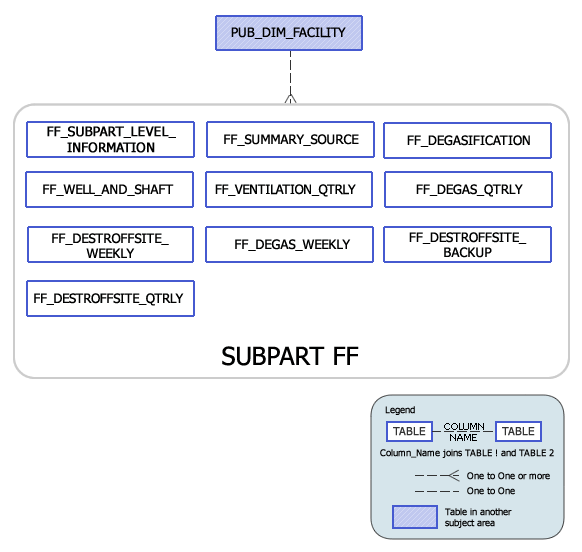
Subpart FF table structure with clickable elements.
📄Subpart G – Ammonia Manufacturing
Covers GHG emissions from the manufacture of ammonia, including emissions from both combustion and process units using CEMS and non-CEMS methodologies.
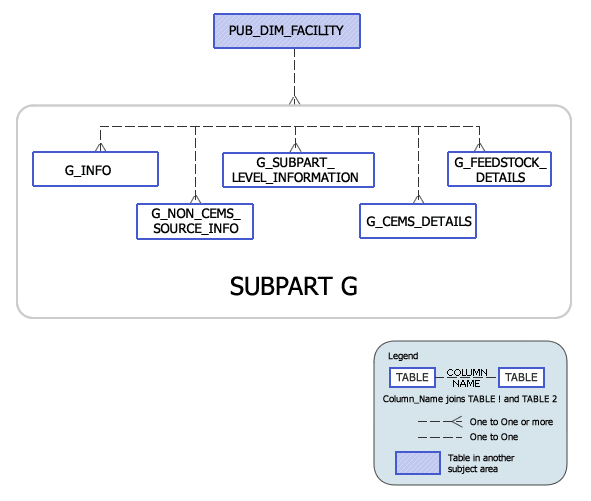
📄Subpart GG – Zinc Production
Covers GHG emissions from primary zinc production processes, including emissions from process units not monitored by CEMS.
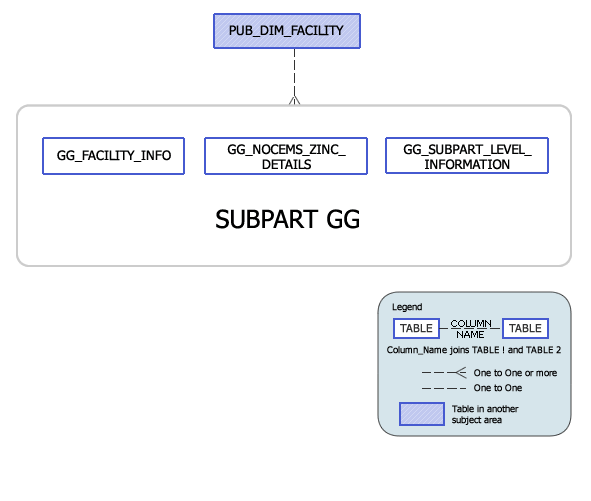
📄Subpart H – Cement Production
Covers GHG emissions from cement manufacturing, including emissions from kilns and combustion sources, using both CEMS and non-CEMS methods.
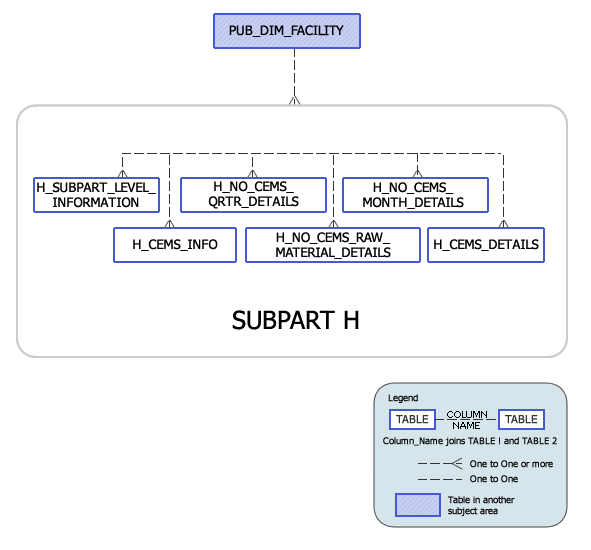
📄Subpart HH – Municipal Solid Waste Landfills
Covers GHG emissions from municipal solid waste (MSW) landfills, including landfills with and without gas collection systems, and includes data on waste quantities, landfill characteristics, and methane recovery or destruction.
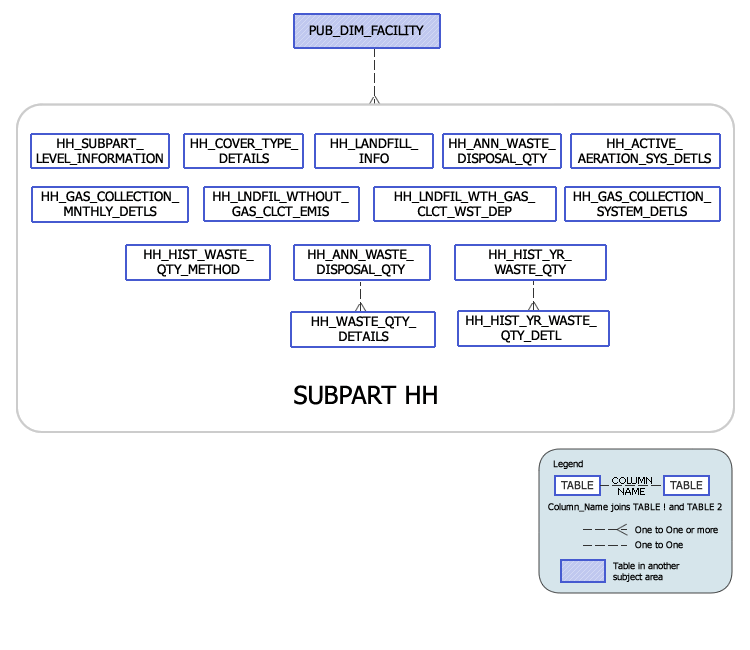
Subpart I – Electronics Manufacturing
Covers GHG emissions from electronics manufacturing, including semiconductor, photovoltaic, MEMS, and LCD production. Emissions are reported for various fluorinated GHGs and nitrous oxide, including abatement and facility-level data.
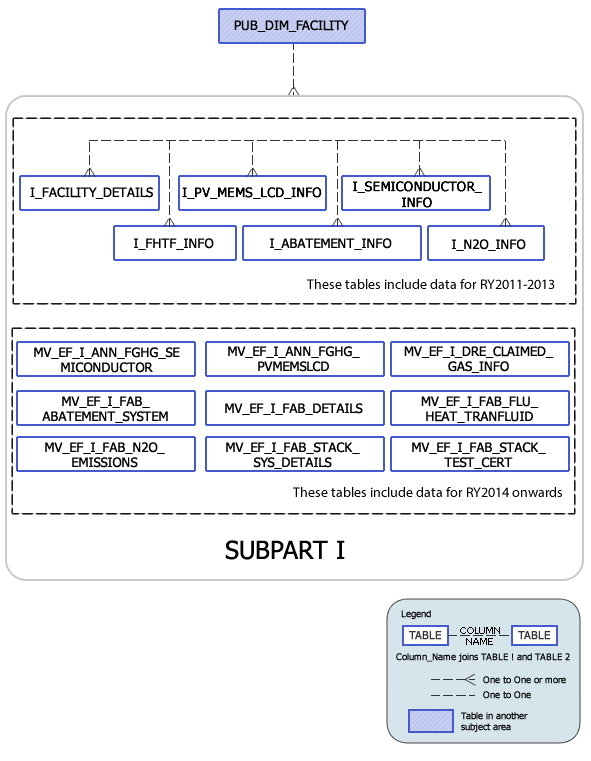
Subpart II – Industrial Wastewater Treatment
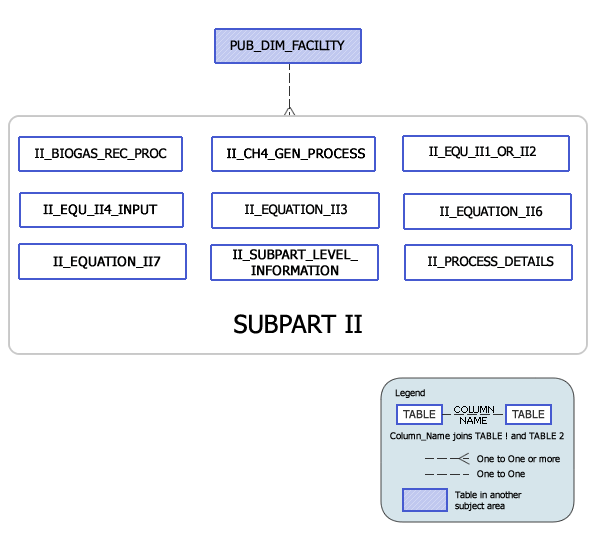
Subpart K – Ferroalloy Production
Covers GHG emissions from suppliers of coal-based liquid fuels.
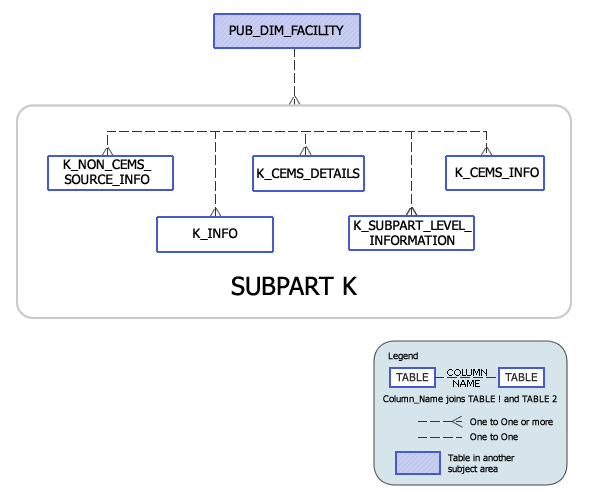
Subpart L – Fluorinated Gas Production
Covers GHG emissions from fluorinated gas production processes.

Subpart MM – Suppliers of Petroleum Products
Covers GHG emissions from suppliers of petroleum products.
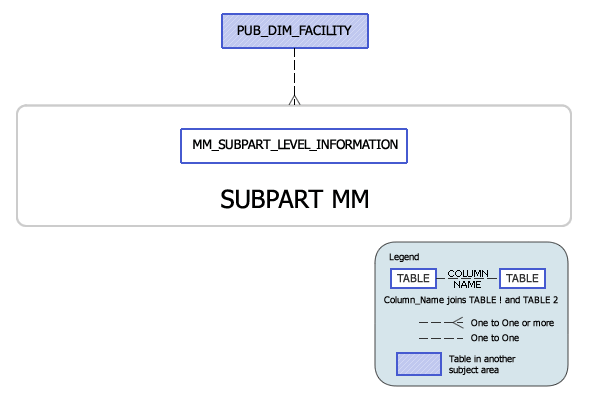
Subpart MM table structure with clickable elements.
Subpart N – Glass Production
Covers GHG emissions from glass production facilities.

Subpart NN – Suppliers of Natural Gas and Natural Gas Liquids
Covers GHG emissions from natural gas suppliers and fractionators.
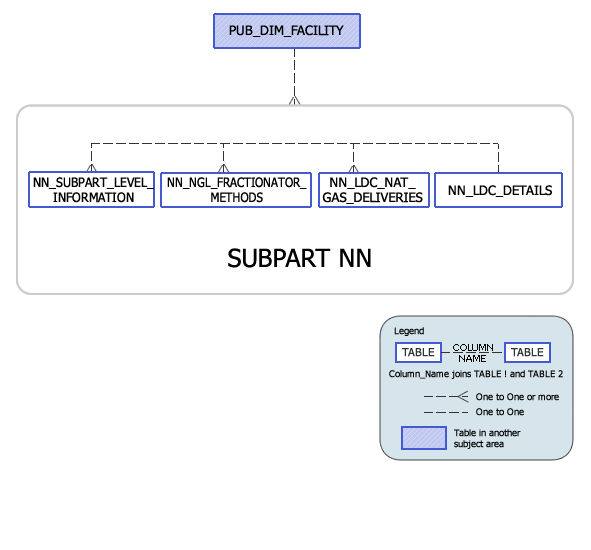
Subpart P – Hydrogen Production
Covers GHG emissions from hydrogen production facilities.
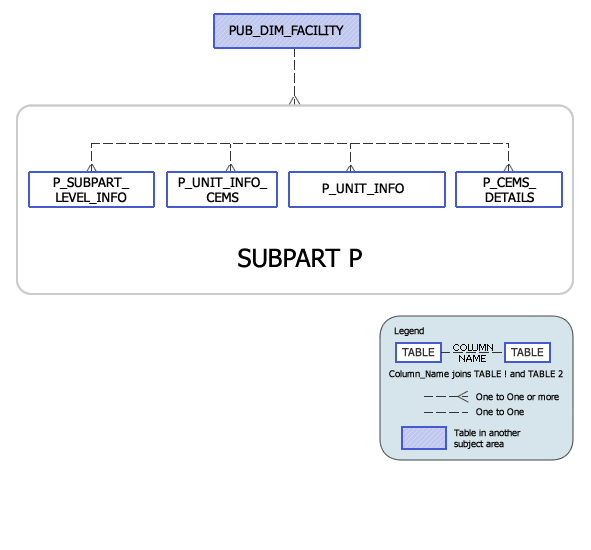
Subpart P table structure with clickable elements.
Subpart PP – Suppliers of Carbon Dioxide (CO₂)
Covers GHG emissions from CO₂ suppliers including extraction and distribution.
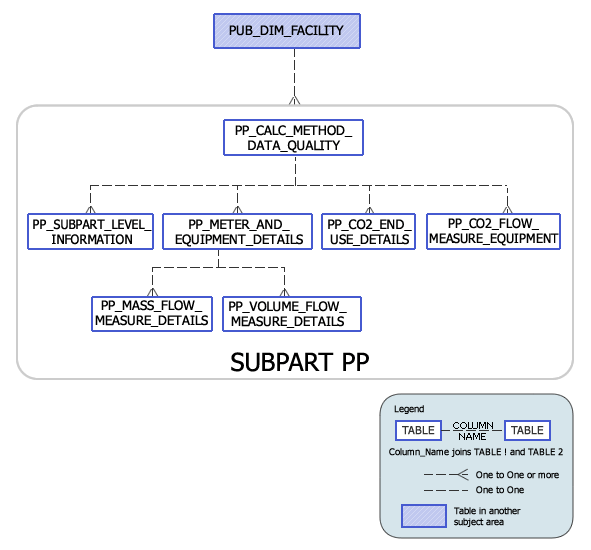
Subpart PP table structure with clickable elements.
Subpart Q – Iron and Steel Production
Covers GHG emissions from industrial wastewater treatment operations.
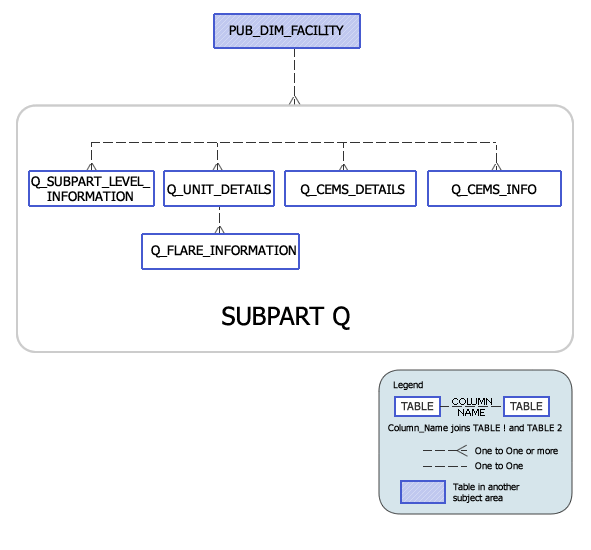
Subpart R – Lead Production
Covers GHG emissions from primary aluminum production facilities.
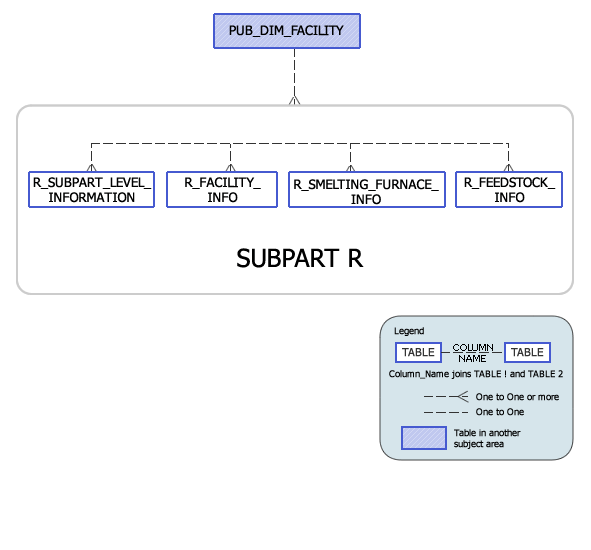
Subpart R table structure with clickable elements.
Subpart RR – Geologic Sequestration of Carbon Dioxide
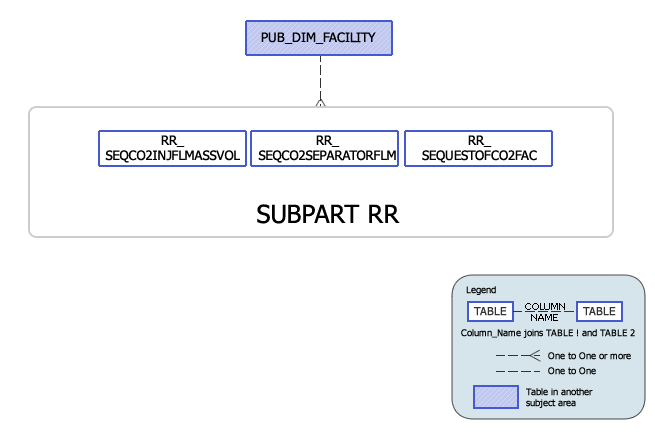
Subpart RR table structure with clickable elements.
Subpart S – Lime Manufacturing
Covers GHG emissions from lime manufacturing facilities.

Subpart S table structure with clickable elements.
Subpart SS – Electrical Equipment Use
Covers GHG emissions from electrical transmission and distribution equipment, including SF6 and other fluorinated GHGs used in gas-insulated switchgear and circuit breakers.
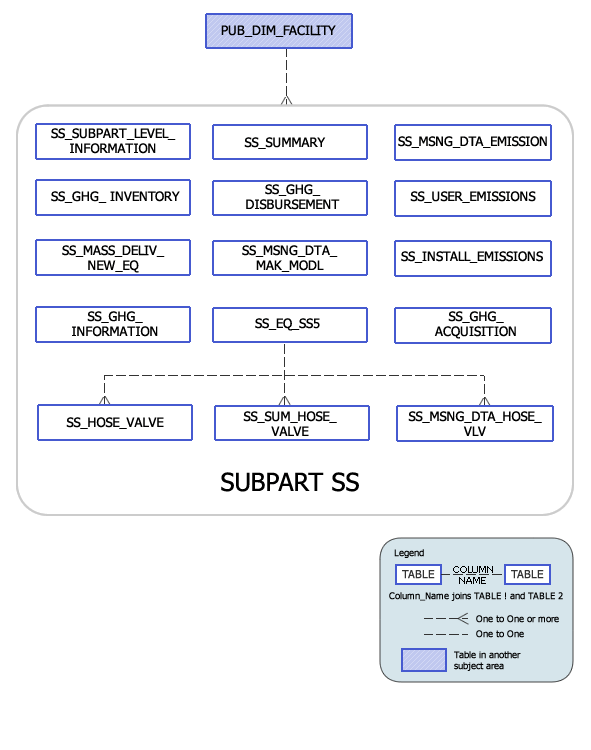
Subpart SS table structure with clickable elements.
Subpart T – Magnesium Production
Covers GHG emissions from magnesium production facilities.
Covers GHG emissions from magnesium production processes, including emissions from the use of cover and carrier gases such as SF6, HFC-134a, and others.
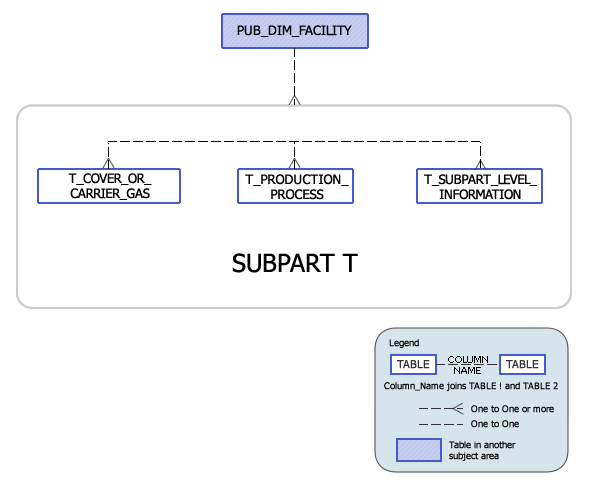
Subpart T table structure with clickable elements.
Subpart TT – Industrial Waste Landfills
Covers GHG emissions from industrial waste landfills.
Covers methane emissions from industrial waste landfills, including data on landfill design, waste characteristics, gas collection systems, and historical waste disposal practices.
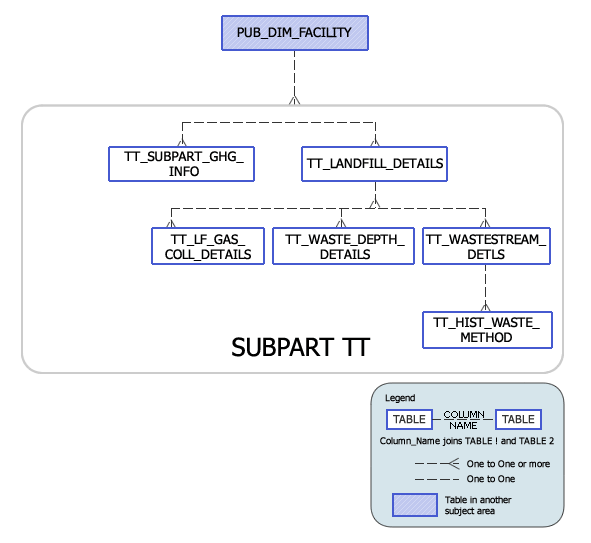
Subpart TT table structure with clickable elements.
Subpart U – GHG Emissions from Electric Arc Furnace Steelmaking
Covers GHG emissions from miscellaneous carbonates production.
Covers greenhouse gas emissions resulting from electric arc furnace steel production processes, including mass balance and calcination methods.
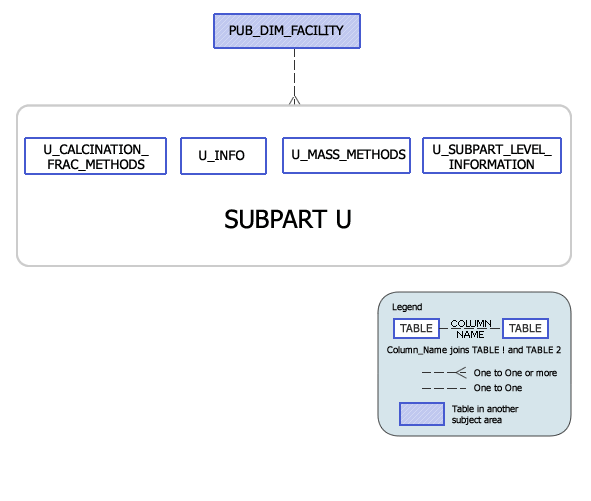
Subpart U table structure with clickable elements.
Subpart UU – Injection of Carbon Dioxide
Covers GHG emissions from injection of CO₂ underground for geologic sequestration.
Covers facilities that inject carbon dioxide underground for purposes other than geologic sequestration, such as enhanced oil and gas recovery.
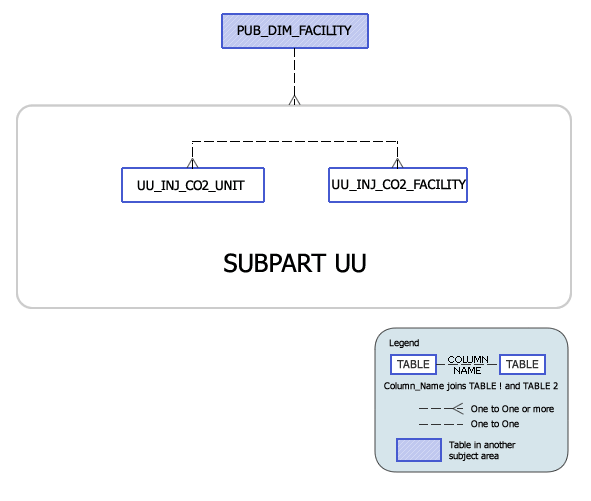
Subpart UU table structure with clickable elements.
Subpart V – Nitric Acid Production
Covers GHG emissions from nitric acid production units.
Covers GHG emissions from the production of nitric acid, including reporting on facility details and nitric acid train operations.
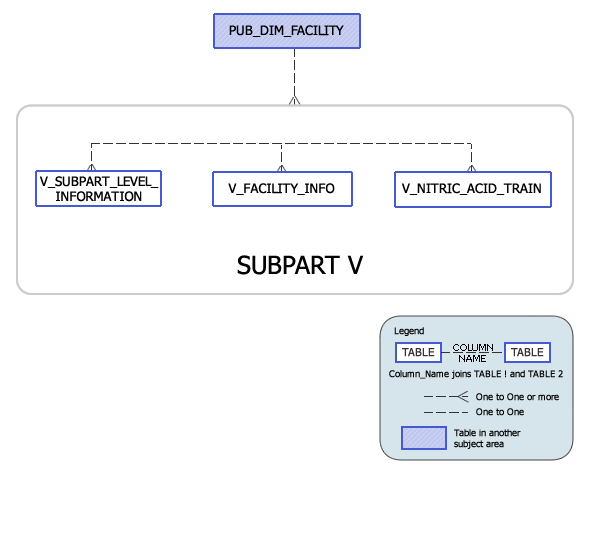
Subpart V table structure with clickable elements.
Subpart W – Petroleum and Natural Gas Systems
Covers GHG emissions from a wide range of petroleum and natural gas operations, including onshore and offshore production, gas processing, transmission, storage, and enhanced oil recovery (EOR). Subpart W includes detailed reporting requirements for numerous emission sources such as compressors, dehydrators, tanks, flares, and pneumatic devices.
Due to the large number of components and diagrams (over 40), Subpart W has a dedicated page for full details and table diagrams.
Subpart X – Petrochemical Production
Covers GHG emissions from petrochemical production processes including ethylene, propylene, and other feedstocks. Emissions sources include combustion units, flares, mass balance systems, and CEMS-monitored units.
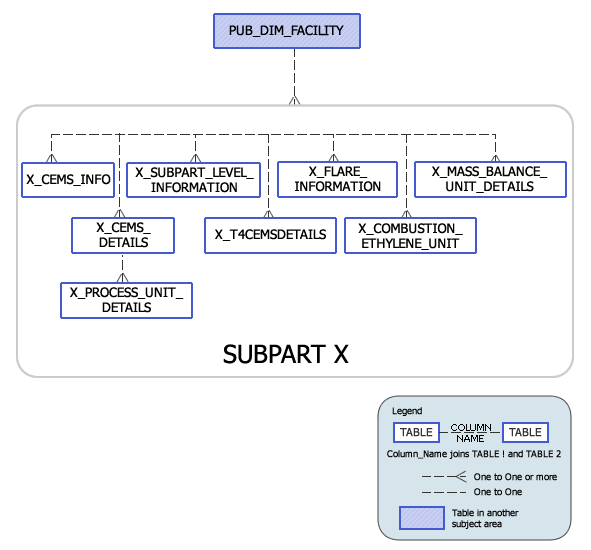
Subpart X table structure with clickable elements.
Subpart Y – Petroleum Refineries
Covers GHG emissions from petroleum refineries.
Covers GHG emissions from petroleum refineries, including emissions from process vents, flares, delayed coking, storage tanks, equipment leaks, and sulfur recovery. Methods include CEMS, engineering calculations, and mass balance approaches across multiple refinery operations.

Subpart Y table structure with clickable elements.
Subpart Z – Phosphoric Acid Production
Covers GHG emissions from phosphoric acid production facilities.
Covers GHG emissions from phosphoric acid production facilities. Emissions primarily result from chemical reactions in production lines and are measured using CEMS or calculated based on inorganic carbon content and process parameters.
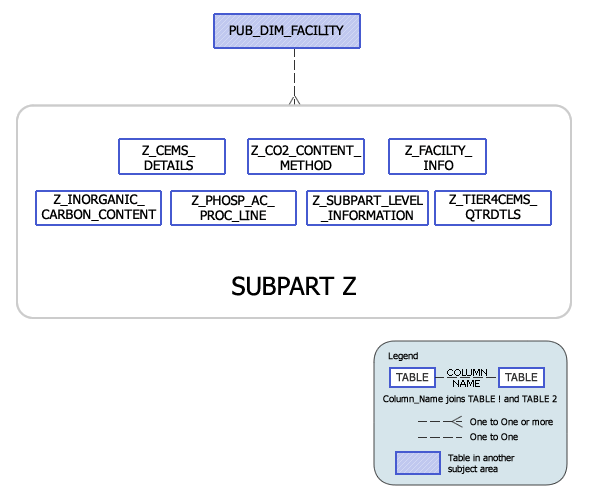
Learn More about GHGRP Subparts
For additional information about each Greenhouse Gas Reporting Program (GHGRP) subpart, including detailed regulatory context, data reporting requirements, and sector-specific guidance, visit the GHGRP Subparts Overview page on EPA.gov.

